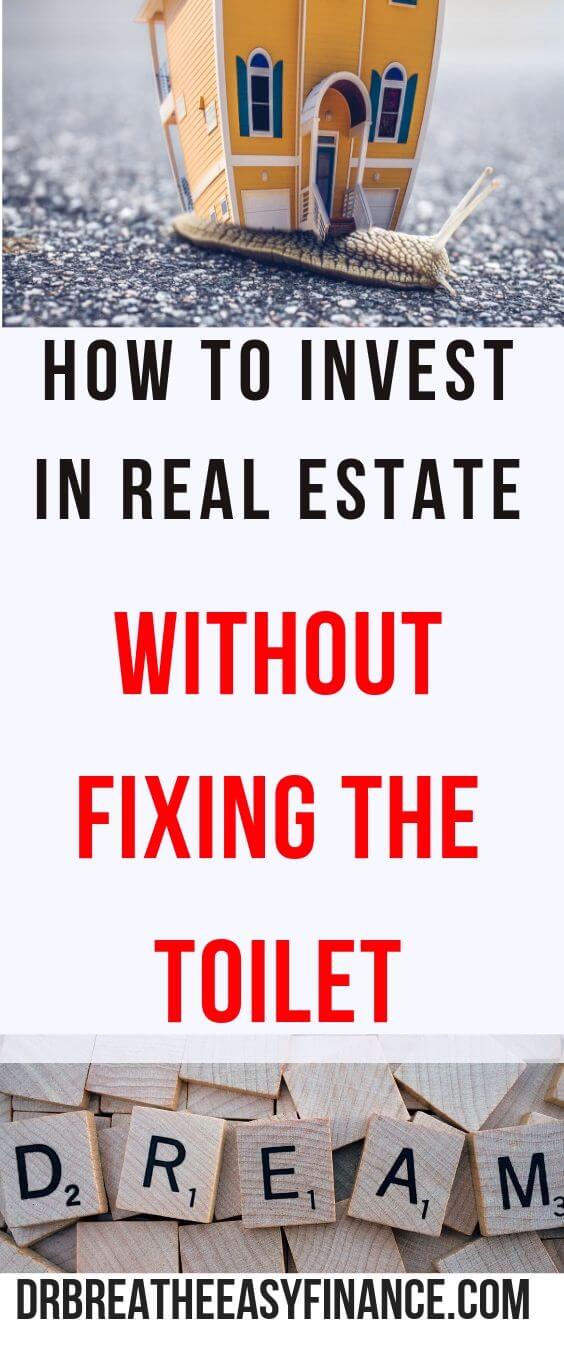I recently invested $50,000 with DiversyFund and would like to explain to you why I decided to do so. In the past, I talk mostly about stock and bonds, and recently, I got bitten by the real estate bug. we recently published a cool article on 5 reasons why physicians should invest in real estate. In the last blogtober exercise which I failed miserably, I produced only 8 articles for that month instead of 31. one positive thing came out of the exercise, I was able to learn more about commercial real estate. Check out my blogtober articles – some are better than others, but I tried.
So far, I have invested in non traded REIT, real estate syndications and we are in the process of closing an actual physical real property – an 8 plex I can touch and feel.
This post is sponsored by DiversyFund (please read our disclosure), but since I actually invest a good amount into the company, it shows how much I believe in the company and that I have done my own research. Before taking any advice, please do your own due diligence also.
Not only was their mission very solid, but they also have excellent customer service behind them. I had a phone meeting with the CEO and he was down to earth and have a clear vision on how to grow the business.
Here’s an overview of why I invest in DiversyFund’s REIT, what a REIT is, and why it’s such a popular way to invest and diversify your overall portfolio to achieve mind-blowing returns.
In this particular post, you get a walk through the way I evaluate an investment vehicle and what drives
my decision to make an emphatic decision to invest in the company.
Did you know that 10% of Billionaires made their wealth through real estate investment? That’s why the wealthy have historically invested in real estate to diversify and grow their portfolio. And we’re not just talking about real estate in general, but more specifically, commercial real estate.
You can read up more in this article which details how billionaires made their wealth.
The problem has been that previously, there hasn’t been a way for everyday people like you and I to invest in commercial real estate without having to cough up millions of dollars. That’s why DiversyFund was built.
In their own words, DiversyFund “[aim’s] to close the wealth gap and enable all Americans to achieve
financial freedom by providing them access to investments that previously were only open to the
wealthy”, namely, real estate.
We recently syndicated an awesome article from The Money Mix on our blog about DiversyFund. You can check it out to get an idea of what DiversyFund is all about.

An Overview of DiversyFund’s Growth REIT
REIT stands for “Real Estate Investment Trust” and is a vehicle that allows investors to aggregate their
money in one pool and invest in multiple income-producing real estate investments. These investments
range from commercial office buildings, apartment complexes, and even student housing developments.
The DiversyFund Growth REIT is a professionally managed REIT that focuses on buying, renovating and
selling multifamily real estate assets, aka apartment buildings. This fund has a three-step process to
produce market-beating returns. The three-step process is as follows:(with details of each step further
down)
1. Purchase cash flowing multi-family assets
2. Renovate the apartment buildings with modern updates
3. Wait. Let the assets appreciate over time and sell them for a profit.
As briefly mentioned in the introduction, the problem has been that consumers like you and I may not
be able to afford writing a check for $50 million or even $10 million to purchase commercial real estate
that produces great returns.
DiversyFund allows investors to enjoy a piece of the pie from the great returns produced by REIT
investments. Starting with just $500, you can start investing like the wealthy and diversify your
portfolio by adding commercial real estate with DiversyFund’s Growth REIT.
Table of Contents
Step 1: Purchase Cash Flowing Multi-Family Assets
Within the real estate market, multi-family assets have consistently produced the highest returns within real estate investments. They purchase large multifamily assets with at least 100 units with most of their assets around 200 units. Multifamily assets allow them to provide housing for 200+ families, ensuring they always have rent income (even when there may be a few vacant apartments occasionally) and are in high demand.
Step 2: Renovate the Cash Flowing Multi-Family Assets
In real estate, by renovating parts of the property such as kitchens, bathrooms, and flooring, you can
generate approximately $1.15 – $1.50+ for every dollar invested in renovating the property (of course
this is dependent on the location, property type, etc.).
By spending money to renovate your real estate asset, you could potentially get a return of 50% in value and charge increase higher rent prices based on the added value from updating the housing!
Step 3: Wait, And Sell the Assets for A Profit
The great thing about real estate is that it historically isn’t near as volatile as the stock market. The
stock market may show your money is up 10% one day, and down 10% the next, depending on
economic conditions and major events. Real estate, on the other hand, is an asset that is always in need
regardless of economic condition.
In other words, we all need a place to live regardless of how well the economy is doing! That’s not to say there aren’t declines in real estate value, but that is to say that the market is often much less volatile as compared to the stock market.
When investing in real estate, you’re investing more-so in the land. As populations increase, available
land for housing decreases. That means the demand for houses increases while the supply decreases,
making the overall value of the property increase. By waiting to sell your real estate asset at a prime
market high, you can potentially grow your investment multiple times the return of the stock market
return.
Example Of Growth REIT Investment
Why are multi-family apartment buildings the focus of DiversyFund’s Growth REIT? To illustrate the
concept, consider a local apartment building in your area that houses, perhaps 100 apartments to local
families in Arkansas. The calculation below is just for illustration purpose as apartments are cheaper in my little town in Arkansas. They also rent better than illustrated.
The property is purchased for $9,000,000. With DiversyFund, however, the aggregate cash available is
enough to purchase in cash. (But to give you an idea on a mortgage payment for $9,000,000 at 4.0% –
4.25% interest, your commercial mortgage loan payment somewhere between $35,000 to $40,000 per
month.)
This apartment complex can currently charge $450 in rent per apartment or $45,000 per
month. Your monthly income would be just enough to cover the mortgage payment and then some.
However, step two of the process is focused on renovating the building to increase cash flows from the
property. After renovating the apartments by updating the kitchens, bathrooms, and carpeting, the
investment is now worth $11,000,000 and allows you to charge an additional $150 per month per
apartment in rent, for a total of an extra $15,000 per month in rental income.
Your project now sits, after renovations, with an asset worth $11,000,000, and currently generates
$55,000 – $60,000 in rental income (all of which income is passed onto the owners of the REIT as
investment income). After owning and holding the property for 5-10 years, the fund experts anticipate
the asset’s value is at a high point and wish to sell the apartment for $15,000,000.
The return on investment, plus the rental income over the years is paid back to the REIT investors.
Historically, DiversyFund Growth REIT has averaged 17.6% annual return on its investment
properties, as compared to the stock market nearing 8% – 9% annual returns. Which would you choose?
How You Should Use DiversyFund Within Your Portfolio
DiversyFund does a great job illustrating why investing in commercial real estate is necessary to achieve
“market-beating” returns that formerly, only wealthy individuals were able to achieve. As they illustrate
on their website, you might be familiar with diversifying your portfolio among stocks and bonds.
Perhaps 70% stocks and 30% bonds are your allocation percentage of choice, or somewhere in between.
Our asset allocation is 90% stocks because, well, I am aggressive a little bit.
However, one asset is missing with this portfolio that can potentially double your overall return, and
that is private market real estate investments!
So how should you use DiversyFund as an add-on to your portfolio? Depending on your risk tolerance,
it’s recommended that you allocate anywhere between 15% – 30% to private market commercial real
estate investments, and the rest of your portfolio allocated between stocks and bonds. The amount
allocated can be adjusted to fit your personal risk tolerance.
Here’s an illustration of the potential difference in return’s you might see when adding private market
real estate to your portfolio, assuming a total portfolio of $100,000:
| Scenario 1 – $100,000 Portfolio: 70% Stocks, 30% Bonds, 0% REITs | |||||
| % of Portfolio | Amount Invested | Return | Total | Total Return | |
| Stocks | 70% | $70,000 | 9% | $76,300 | 6.9% |
| Bonds | 30% | $30,000 | 2% | $30,600 | |
| REITs | 0% | $0 | 0% | $0 | |
| $106,900 | |||||
| Scenario 2 – $100,000 Portfolio: 50% Stocks, 20% Bonds, 30% REITs | |||||
| % of Portfolio | Amount Invested | Return | Total | Total Return | |
| Stocks | 50% | $50,000 | 9% | $54,500 | 10% |
| Bonds | 20% | $20,000 | 2% | $20,400 | |
| REITs | 30% | $30,000 | 17% | $35,100 | |
| $110,000 | |||||
To further illustrate the power of even a higher return of just 3.1% per year, here is how large your
$100,000 investment would be at different timeframes for both Scenario 1 and Scenario 2 from above:
| Time | Scenario 1 ($100,000 – 6.9% annual return) | Scenario 2 ($100,000 – 10% annual return) |
| 5 Years | $139,601.00 | $161,051.00 |
| 10 Years | $194,884.39 | $259,374.25 |
| 15 Years | $272,060.55 | $417,724.82 |
In other words, you could almost double the amount of money you would have after 15 years by
properly adding a DiversyFund Growth REIT to your overall investment portfolio.
Doubling Your Money Isn’t Just for Wealthy Individuals…
It’s not uncommon for wealthy individuals, you know, the multi-millionaires and billionaires of the
world, to double their money from their investments. The difference is that they have the capital
needed to do so, where you and I may not be there (just yet).
To recap what the fund will do with your money, they will first buy multi-family real estate assets;
second they will renovate these assets to increase rent income; and third, they will maintain the rental
income-producing investment and sell when the market is at it’s prime for a great return.
With DiversyFund’s Growth REIT, you can take advantage of the market-beating returns that once were
only available to wealthy individuals! Their 3-step process followed by commercial real estate industry
professionals sets the fund investors up for continued great returns. Historically, they have had an average of 17.6% return. Starting with as little as $500. Those are numbers I think we can both live with!
I am a pulmonary and critical care doctor by day and personal finance blogger/debt slaying ninja by night.
After paying off close to $300,000 in student loan debt in less than 6 months into my real job, I started on a mission to help others achieve the same. There is no magic to this than to strap up and get it done. Some of the ways we achieved this include side hustle, budgeting, great negotiation skills, and geographical arbitrage.
When I was growing up, common knowledge in Nigeria is that there is one thing you cannot trust anyone else with, and you guessed it – your money.
Being frugal came easily to me based on my background. However, the concept of building wealth did not solidify in my mind until when I finished medical school. I wish I knew what I know now when I was 14. Still, I don’t know enough and I am constantly learning to improve my knowledge.
My goal is to reduce financial illiteracy among young professionals. I am catering to the beginners – babies and toddlers in financial literacy.








Rohan says
REITs are becoming more and more popular- I was introduced to them recently. Eventually, I’m looking at a 15% allocation into REITs. The diversification of REITs is a great way of being exposed to multiple properties, rather than the traditional method of buying one property as an investment
Adebayo says
15% might not be a bad start, I started lower than that and I am assessing as I go. I am also in the process of buying an 8 plex – traditional property. Will see how it goes. Thanks for stopping by and taking the time to comment.